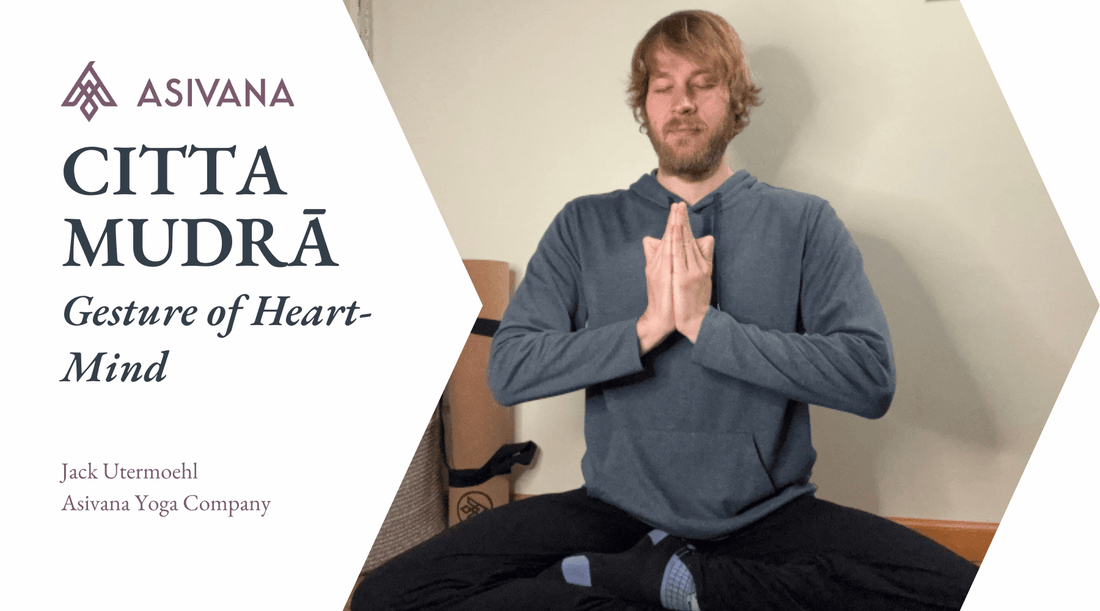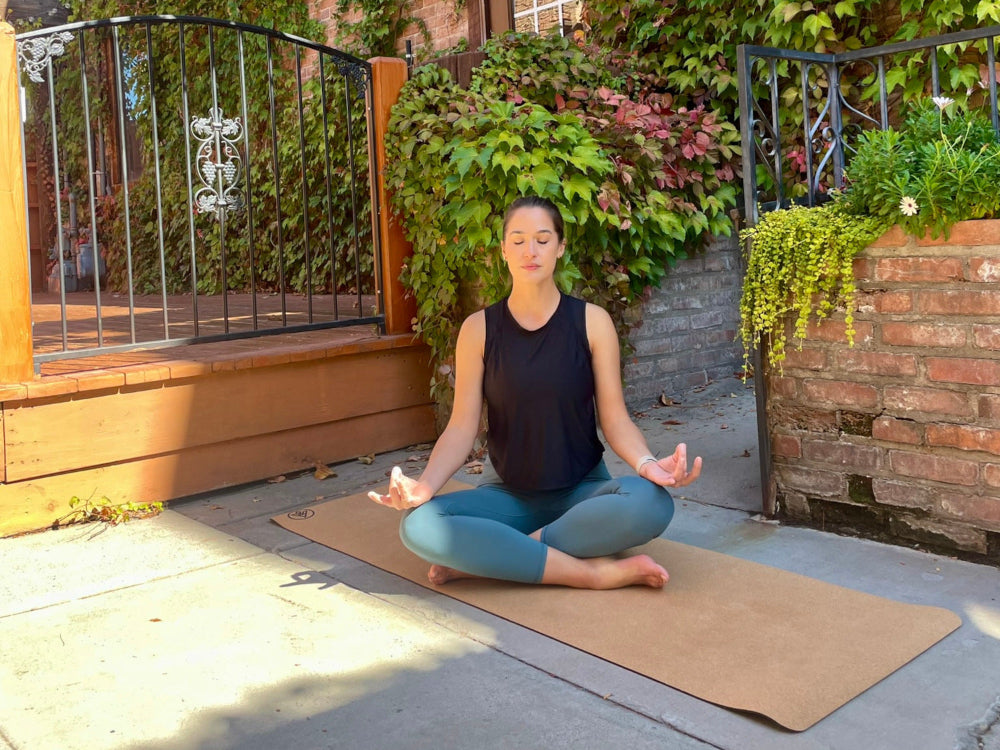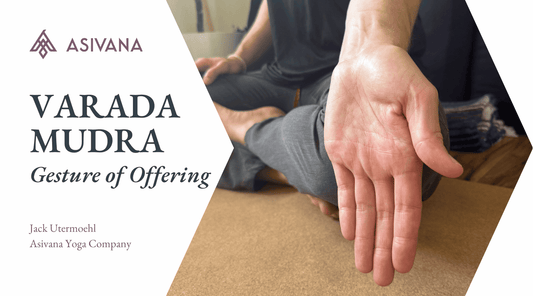
Citta Mudra - Gesture of Heart-Mind
Jack UtermoehlShare
Citta Mudra (Gesture of Heart-Mind)
Sanskrit Name: Citta Mudrā - चित्त मुद्रा
English Translation: Gesture of the Heart-Mind (memory)
Phonetic Spelling: CHIT-tah Moo-Drah
Citta mudra, or the gesture of heart-mind, represents the union of emotional and mental clarity. Citta (heart-mind) refers to the integrative consciousness where thoughts, emotions, and the deeper self come together in harmony.
This mudra is used to connect the practitioner to a balanced state of being where both intellectual and emotional intelligence work together seamlessly.
The word "Citta" refers to the mind or consciousness in Sanskrit. In a more accurate translation of the concept, the citta is the "heart-mind" connection.
Practicing citta mudra enhances mindfulness, compassion, and focus, making it ideal for meditation, mindfulness, and deep emotional work. It encourages the alignment of mind and heart.

Instructions to Perform Citta Mudra
Sit comfortably with your spine straight, either on the floor or in a chair. Begin by taking a few deep breaths, allowing your body and mind to relax.
Hand Position: Form anjali mudra, bend your index fingers keeping the tips touching until they connect with the tips of your thumbs. Then, bring your palms to rest over your heart center, with your fingers pointing upward.
Posture: Sit in sukhasana (easy pose) or tadasana (mountain pose), or simply sit with your back straight if in a chair, with your feet grounded on the floor.
Breathing Technique: Inhale slowly and deeply through your nose, allowing your breath to fill your lungs and expand your chest. Exhale gently through the nose, focusing on the connection between your mind and heart.
Duration: Practice citta mudra for 5 minutes, concentrating on balancing your emotions and thoughts as you breathe deeply.
Benefits of Citta Mudra
Citta mudra is an effective tool for cultivating emotional balance, mental clarity, and mindfulness. It harmonizes the heart and mind, making it particularly beneficial for meditation and emotional healing.
Physical Benefits: Helps reduce tension in the chest and shoulders, evokes better breathing, and enhances mindfulness of the body.
Mental Benefits: Improves focus and mental clarity, reducing distractions and aligning thoughts with deeper intentions.
Emotional Benefits: Encourages emotional balance, compassion, and self-awareness by connecting the heart and mind.
Spiritual Benefits: Facilitates unity of mind and heart, supporting spiritual growth and a deeper connection to self-awareness.
Capture your insights and deepen your connection with our Yoga Journal.Elevate Your Mudra Practice
Symbolism and Meaning of Citta Mudra
Citta (heart-mind) represents the intersection of emotional intelligence and intellectual clarity. By placing the fingers together and resting the hands near the heart center, citta mudra symbolizes the harmony between mind and emotions.
This mudra enhances prana flow in the heart, promoting both physical and emotional health. It is especially useful for cultivating emotional mindfulness, helping the practitioner align their thoughts and feelings to achieve inner peace.
When to Practice Citta Mudra
Citta mudra is particularly useful during meditation or when seeking emotional balance. It can be practiced in moments of stress, anxiety, or emotional overwhelm, helping to calm the mind and connect with deeper self-awareness.
Use citta mudra when you want to align your heart and mind or seek clarity in decision-making. It is also beneficial before or after yoga practice to center your awareness.
A duration of 5 minutes is recommended.
Contraindications for Citta Mudra
Citta mudra is safe for all practitioners and has no specific contraindications.
Additional Insights on Citta Mudra
Affirmations: "My heart and mind are in perfect harmony." / "I am centered in peace and clarity."
Visualization: As you hold citta mudra, visualize a soft, warm light emanating from your heart and expanding to your mind, creating a bridge of energy that unites the two. Feel the clarity between your heart and mind grow stronger with each breath.
Associated Chakras: Citta mudra primarily activates the Anahata (heart chakra).
Paired Asanas: Works well with postures such as sukhasana (easy pose) or tadasana (mountain pose).
Related Pranayama: Pair with deep belly breathing or alternate nostril breathing (nadi shodhana) to calm the mind and bring focus to the heart-mind connection.
Meditation Techniques: Citta mudra is ideal for mindfulness meditation, focusing on the balance between emotions and thoughts.
Variations and Modifications
Alternative Hand Positions: Anjali Mudra, Jnana Mudra
Adaptations for Beginners: Beginners can start by holding citta mudra for shorter periods, such as 2 minutes, and gradually increase the duration.
—— 🕉 ——

Personal Insights
Citta mudra is a little difficult to practice with my hands but not impossible to hold for a few minutes at a time. I had to practice this one in my lap until I could comfortably hold it at my heart center.
The citta is our mind that remembers all experiences, everything we've ever done, seen, felt, smelled... the citta remember faces we weren't aware we saw and every other possible thing within our awareness. This much information would overwhelm the conscious mind and so it goes into the citta with or without awareness.
When we hear of mindfulness, what the teacher is most likely talking about, is connecting with the citta, and observing the immense amount of information we're absorbing at all times. By placing citta mudra at my heart center, I find I'm immersed in the sensation of that very moment.
Let us know your experience with citta mudra in the comments below.












